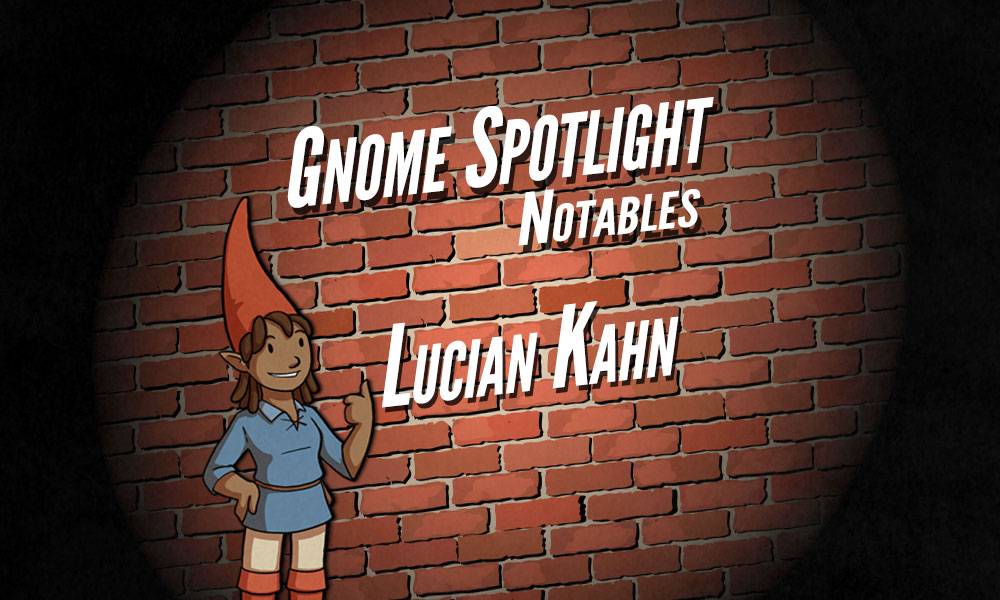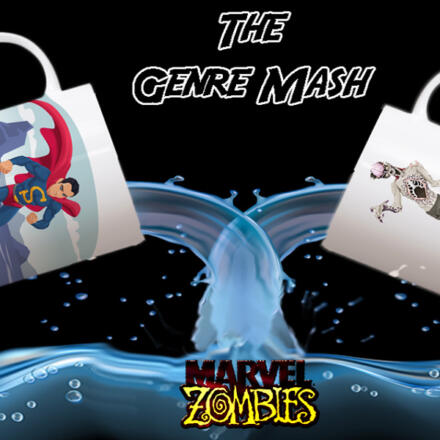
Welcome to the next installment of our Gnome Spotlight: Notables series. The notables series is a look at game developers in the gaming industry doing good work. The series will focus on game creators from underrepresented populations primarily, and each entry will be a short bio and interview. We’ve currently got a group of authors and guest authors interviewing game creators and hope to bring you many more entries in the series as it continues on. If you’ve got a suggestion for someone we should be doing a notables article on, send us a note at headgnome@gnomestew.com. — Head Gnome John
Meet Lucian

Lucian Kahn
Lucian Kahn is the designer of the tabletop RPGs Dead Friend: A Game of Necromancy and Grandma’s Drinking Song, and project manager for the upcoming anthology You & I: Roleplaying Games for Two. He is obscurely famous as singer and guitarist for the now-defunct transgender, Jewish, klezmer-punk comedy band Schmekel. He lives in Brooklyn, New York with his cat, Beastie. Follow him at @oh_theogony on twitter.
Talking With Lucian
1) Tell us a little bit about yourself and your work.Â
Flamboyant absurdism with surprising moments of dire seriousness? Myself and my work.
2) What project are you most proud of?
Dead Friend: A Game of Necromancy. (http://drivethrurpg.com/
3) What are you working on now?
I’ve just started playtesting Grandma’s Drinking Song, a verse-writing, song-singing rpg based on my matriarchal Jewish family’s stories of bootlegging liquor in the Bronx during Prohibition. I’ve also been project-managing an anthology of two-player rpgs called You & I: Roleplaying Games for Two, which will feature games by at least 13 different designers. I also just sent along a module to John Harness’ An Exquisite Game, a collaborative science fiction project inspired by surrealist art.
4) What designers and games are some of your influences?
I’m still reeling from the experience of playing the Romantic composer Robert Schumann in a LARP called Deranged by Maria and Jeppe Bergmann Hamming. That game has had a huge impact on Grandma’s Drinking Song. I’ve also recently drawn inspiration from Fall of Magic, Shooting the Moon, The Quiet Year, Bluebeard’s Bride, and Before the Storm. Also my friend Sharang Biswas’ bizarre one-player game Verdure about witchcraft and making salad.

5) What mechanics do you like best in games?
Rituals and ceremonies, open-ended story prompts, physical objects that affect both control flow and atmosphere, real-time character development, spontaneous creation of art, poetry, and music.
6) What themes do you like to emphasize in your game work?
Memory and unreliable narration, religion, emotional conflict, moral ambiguity.
7) How would you describe your game design style?
Surreal in content but accessible in mechanics. I want my players to enjoy a strange, immersive experience without needing to learn too many rules ahead of time.
8) How does queerness fit into your games? Transness?
The true answer to this is quite bleak. A few years ago, another trans friend of mine died of suicide, and I went into a depression during which the only social activity I could get excited about was a campaign of Dungeons & Dragons with complete strangers. I was playing a 356 year old dwarf bard hag named Briney Hilda with magical bagpipes who hit on every young male elf, including the minion of the vampire Strahd. This creepy yet goofy surrealism was the only thing that helped me endure my friend’s death and the resulting upheaval in my queer circles, which are repeatedly shaken by suicide. It’s not a coincidence that I eventually made a funny friendship game about ghosts. Morbid humor is vital to my resilience.
9) What one thing would you change in gaming?
I think all artistic subcultures eventually gravitate toward generating cliques and pockets of hero-worship, so game design is not special in this regard, but I would like to see the hobby focus less on creating new canons of form based on emulating the work of two or three designers, and more on continuing to stretch stylistic boundaries.
















